Bloomington city engineer gives 180-day order, puts stop signs at 2 intersections near IU campus
Starting next Monday (Aug. 11), road users headed north or south along Indiana Avenue at 13th Street will see something new—a stop sign. The same goes for travelers in both directions on Woodlawn Avenue at 13th Street.
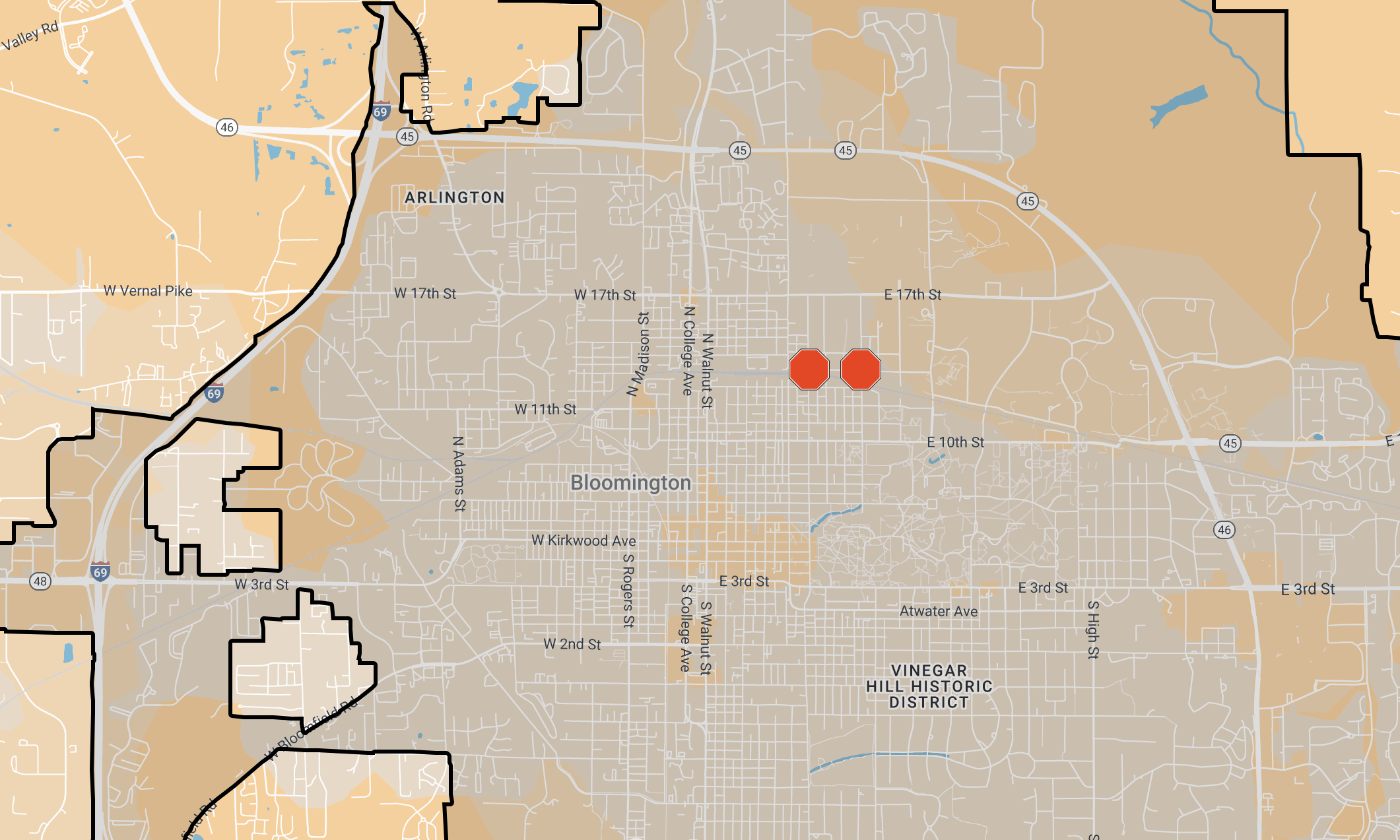
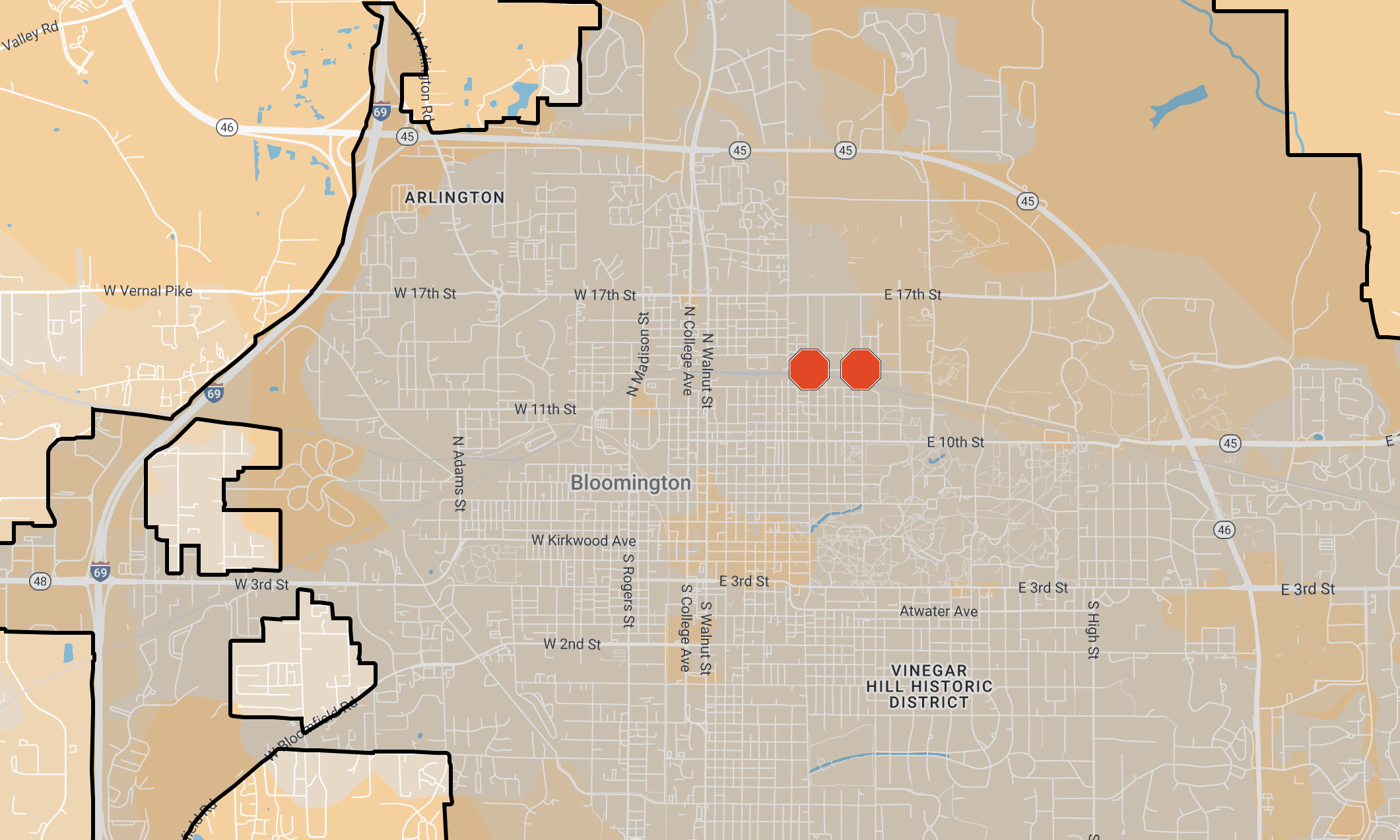
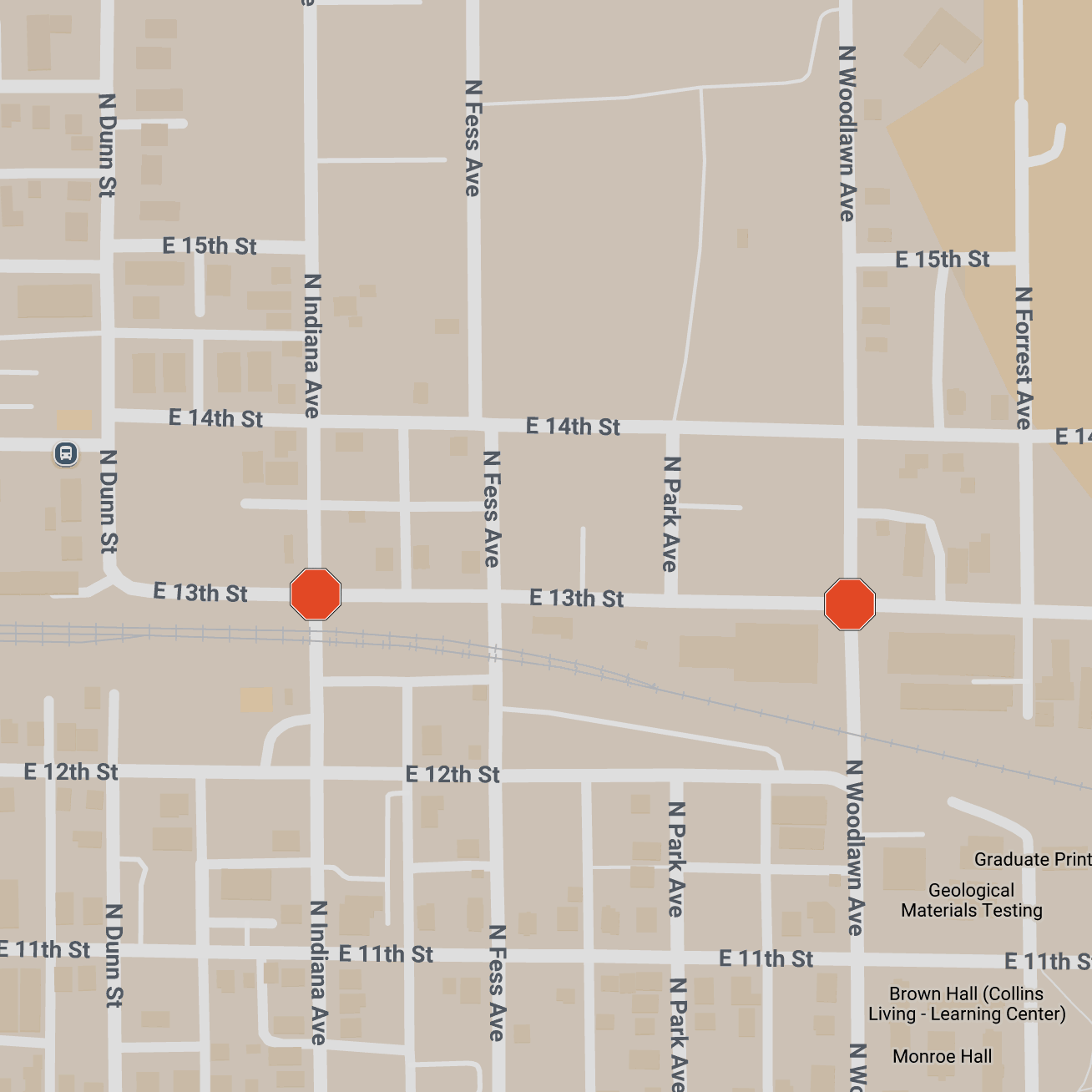
Maps by the B Square from locations provided by the city of Bloomington. [dynamic map]
Starting next Monday (Aug. 11), road users headed north or south along Indiana Avenue at 13th Street will see something new—a stop sign.
The same goes for travelers in both directions on Woodlawn Avenue at 13th Street.
Traffic moving east and west on 13th Street already has to stop at those intersections. The intersections are located north of the Indiana University academic campus and south of the football stadium.
The decision to install stop signs at the two locations was made by city engineer Andrew Cibor, by issuing an order that’s good for six months (180 days).
Cibor’s factual basis for converting the two intersections into all-way stops includes the number and type of crashes, as well as the traffic volume.
Based on the numbers that Cibor presented to the city’s new transportation commission at its July 21 meeting, Indiana Avenue at 13th Street saw five right-angle crashes between November 2023 and November 2024. Right-angle crashes are considered by the Indiana Manual on Uniform Traffic Control Devices (IMUTCD) to be ”correctable” through an all-way stop. That means the IMUTCD threshold of correctable crashes in a 12-month period was met for installation of an all-way stop.
Indiana Avenue averaged 374 vehicles per hour during its peak 8-hour period, which met the IMUTCD minimum volume requirement of 300 vehicles per hour for the “major” street. And 13th street, averaged 326 vehicles per hour, which met the minimum 200 vehicles per hour for the “minor” street.
Cibor told the city’s transportation commission that Woodlawn at 13th Street saw seven right-angle crashes between March 2023 and March 2024, which met the 12-month minimum threshold in the IMUTCD.
But the traffic volume for both streets fell short of the respective thresholds—293 vehicles per hour for Woodlawn Avenue (compared to the threshold of 300) and 178 vehicles per hour for 13th Street (compared to the threshold of 200). The commentary in the commission’s meeting information packet says “significant pedestrian activity was observed but not measured.” The commentary continues, “The measured vehicle volumes, and observed pedestrian volumes, support the consideration of additional control.”
Based on The B Square’s manual inspection of the crash map in the city’s traffic crash dashboard, none of the crashes at the two intersections in the last six years involved a serious injury, but some did cause injury. The B Square’s count of correctable crashes for the periods described did not match exactly the numbers given by the city, but still hit the IMUTCD thresholds.
At their July 21 meeting, transportation commissioners supported the installation of the all-way stops at both intersections with a unanimous vote on a motion “to adopt the proposed findings and forward to the Common Council with a positive recommendation for the installation of an all-way stop.”
It’s not actually clear what the role of the city council will be. In the past decade or more, the city council has been assumed to have decision making authority, when it comes to installation of stop signs. Some of the most bitter political battles for the council in the last few years have taken place in front of the city council, about the installation of stop signs. But Bloomington mayor Kerry Thomson’s administration, since the start of her term in January 2024, has taken a different view of the council’s authority.
On Feb. 5 this year, the night the council voted to establish the transportation commission, corporation counsel Margie Rice cited IC 36-9-7-5 as the basis for her conclusion that it's the city’s traffic engineer, not the city council, who has legal control over what happens in the city's roadways.
As Cibor described it at the July 21 transportation commission meeting, there’s an “ongoing discussion” between the city’s legal department, the city council’s attorney to sort out how to get from a 180-day order to the inclusion of a stop sign into the city’s inventory of stop signs.
Bloomington city councilmembers were notified in an email message from Cibor on July 31 about the installation of all-way stops on Woodlawn and Indiana avenues. The city’s news release on the topic, issued on Tuesday (Aug. 5), says that the city is working with Indiana University to publicize the stop sign installation, which is expected to take place on Aug. 11.


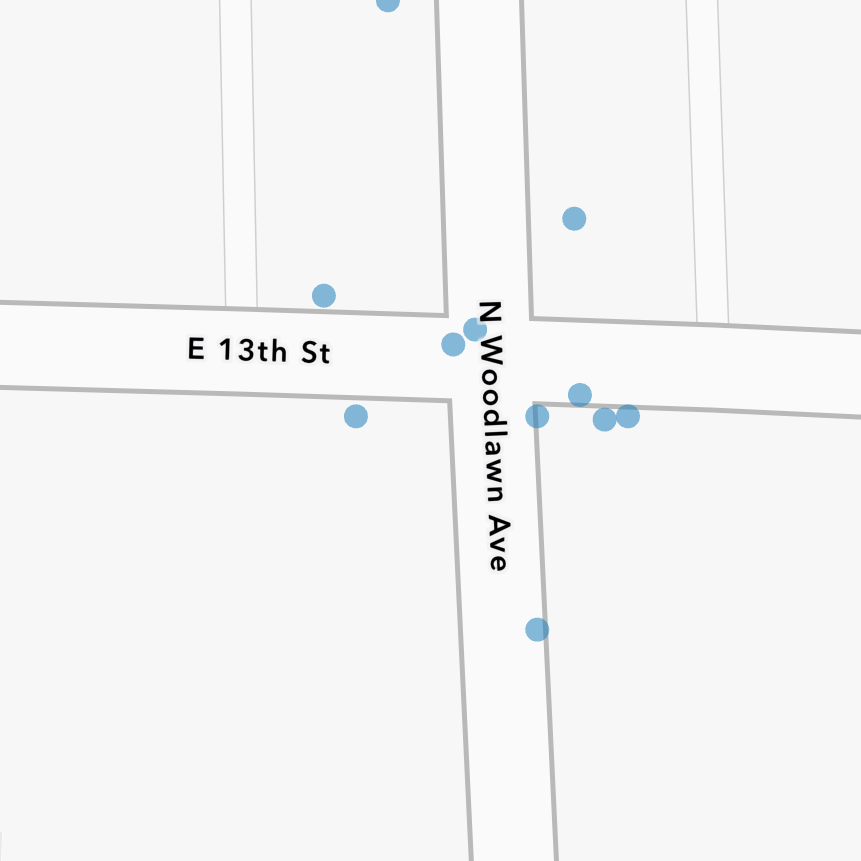
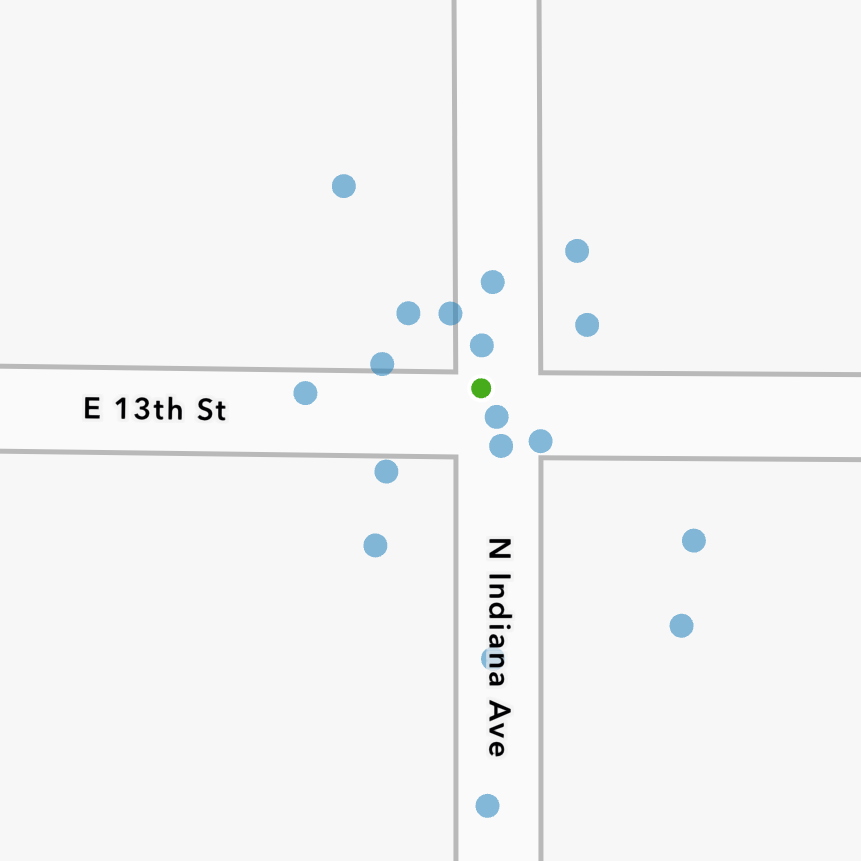
Crash locations are from the map in the city of Bloomington’s crash dashboard.

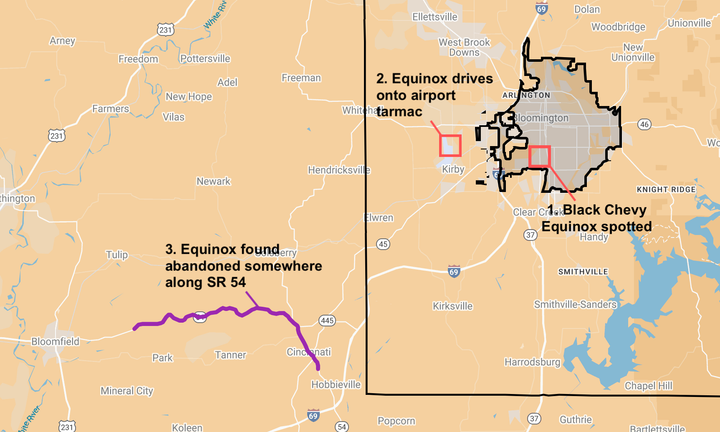


Comments ()